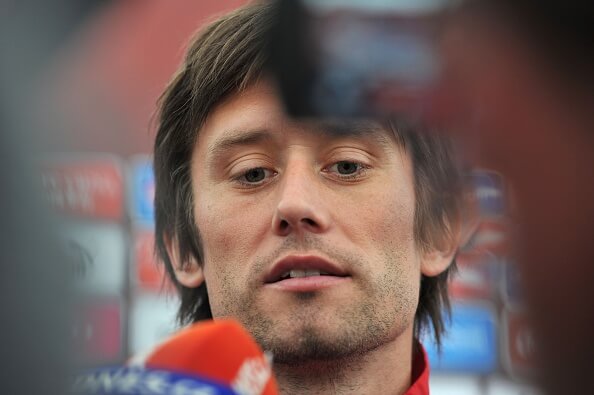Injuries have long been a factor in Arsenal’s inability to mount a serious title challenge.
It is difficult to remember the last season in which Arsenal have succeeded in keeping all their key men injury-free. The club have attempted to rectify the situation with alternative training methods, the introduction of new coaches, the renovation of the training pitch and the adaption of player’s diets and off-season routines.
However, Arsenal still continually fall foul of lady luck. The club affirm there is no underlying issue with the players they recruit nor the methods they practice. Yet can Arsenal’s injury record really be simply a case of bad luck?
Arsenal fans are accustomed to seeing their finest players rehomed in the treatment room but there are some players who seem unluckier than others:
Abou Diaby
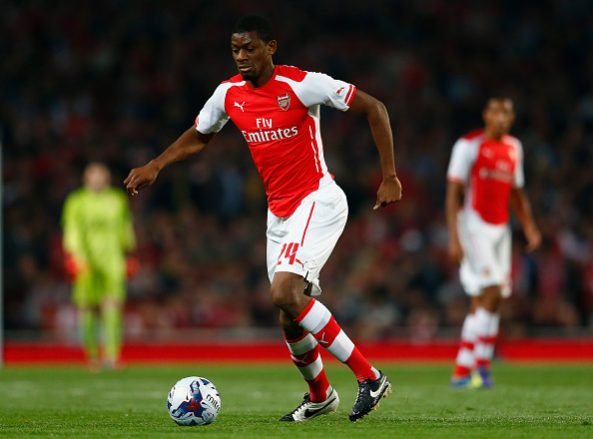
Woody Allen once said, “My luck is getting worse and worse. Last night, for instance, I was mugged by a quaker.” I have a feeling if Abou Diaby was a 1950s American comedy fan, he would find something to relate to in this quote.
Playing magnificent football against a fairly poor Sunderland side, Abou Diaby was tackled by telephone sales rep, Dan Smith. As a result, Diaby suffered a fractured ankle and ruptured ankle ligaments. The tackle was horrendous. Diaby missed the next eight months of his career.
Abou Diaby was a fantastic young player to watch.
He was strong in the tackle, his wiry frame had an unexpected elegance in its stride, his close control was unbecoming for a man of his size and his passing was neat and precise.
At a young age, there was genuine excitement over a young, French midfielder who could have gone on to become a great player in his own right.
However, with that first tackle, Diaby’s body never fully recovered. Wenger kept faith with the young man for several years, even granting the midfielder a new contract in 2010.
However, in 2015, nine years after he first moved to Arsenal with a grand total of 125 appearances, Wenger had to accept that Diaby was never going to fulfil his potential at Arsenal and needed a fresh challenge.
Since then, Diaby’s struggles have continued.
He gained a contract at Marseille but has only made a hatful of appearances in the two years he has been there. He’s now been released.
For a young man who was so elusive to his opponent’s tight marking and attempts to dispossess him, it is football that has remained elusive to him.
Eduardo da Silva
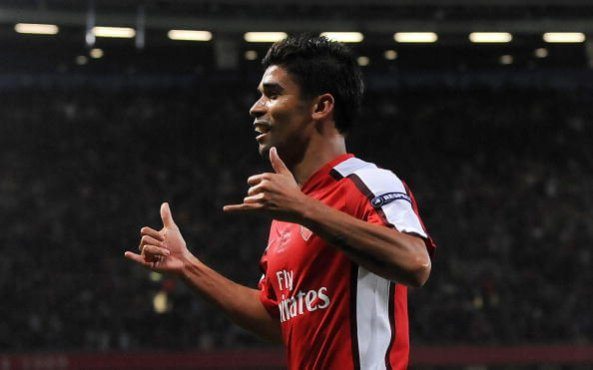
Of course, leg breaks are not a rarity amongst Arsenal players.
On 3rd July 2007, Arsenal signed Brazilian-born Croatian striker Eduardo da Silva.
At the age of 24, the goal-hungry Brazilian had set the Croatian league alight with 73 goals in 109 appearances. His ability in front of goal was enough to persuade Wenger to part with £7.5million.
His first few months were characteristic of Wenger’s usual facilitation of a new player: the odd cup start, an occasional substitute appearance in the league and rotation in the group stages of the Champions League.
However, Eduardo soon endeared himself to the fans and Wenger with his performances in the league over Christmas. Several important goals accompanied by a stream of excellent performances saw his stock rise rapidly – and with it came a genuine title challenge from the Gunners.
However, three minutes into a game against Birmingham City and Eduardo’s good work and early promise had been undone. Dropping deep into midfield to collect a pass, Eduardo was scythed down by Martin Tyler. The tackle was initially replayed on TV before producers discovered how vicious and horrendous the footage was.
Arsenal’s season and Eduardo’s career was fractured.
The centre forward fought back valiantly in his recuperation, it was almost a year to the day that Eduardo took to the field following his broken left fibula and open dislocation of his ankle. However, the fans’ favourite was never to be the same again.
Despite one or two moments of sumptuous skill and a glorious volley against Burnley in the FA Cup, Eduardo struggled to regain that predatory instinct and fluidity of movement that made him such a threat pre-injury.
Eduardo will always be remembered fondly at Arsenal – and questions will always hover over what could have been.
Jack Wilshere
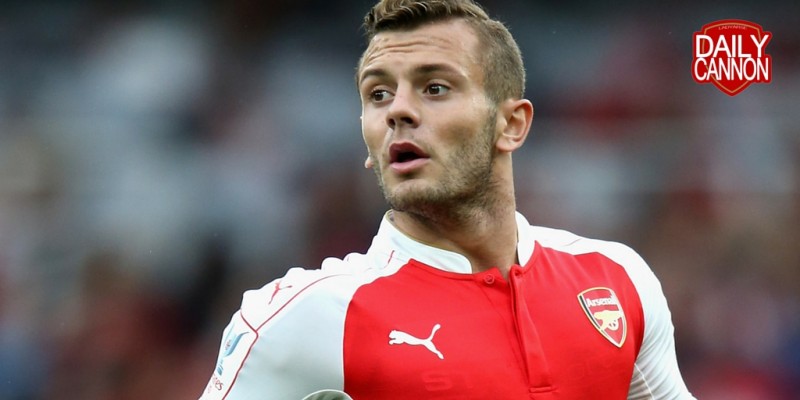
There has always been an insinuation that Arsenal target players who are lightweight and thusly, more susceptible to injury.
Small, diminutive playmakers whose quick feet are as much a security in some situations as they are a danger in others.
One such player is Wilshere.
Jack Wilshere has long been the great hope of Arsenal’s youth academy. He epitomized Arsenal’s free flowing, one touch style of play.
However, there has long been a suspicion that Wilshere often holds onto the ball for too long and can often invite challenges with his close control. It seems unfair to criticise a midfielder for his willingness to run at players and commit them. But I’d imagine a number of the Arsenal coaches have attempted to dissuade Wilshere and his cavalier attitude for his own safety.
Wilshere’s development has stalled under a raft of injuries.
In 2011/12 he suffered an ankle fracture against the New York Red Bulls in the Emirates Cup.
Having spent a year on the sidelines, Wilshere was not long on the pitch before he suffered another ankle injury which required surgery.
A relatively injury free 2013/14 was disrupted by a crunching tackle by Paddy McNair. The Northern Irish defender, rather heavily, lunged in on the pint-sized English man, resulting in Wilshere missing the next four months.
Down on his luck, Wilshere worked meticulously to be fit for the 2015 season. However, following a sturdy preseason the Arsenal midfielder suffered a broken fibula which should only have kept him out for a month. Unfortunately, the England international missed the majority of the season.
After detailing each of his major injuries, it really is easy to see why Wilshere’s career has stalled.
It’s a shame.
Santi Cazorla
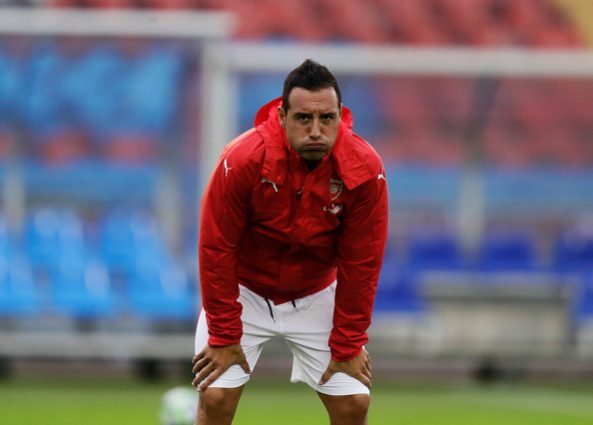
Another diminutive midfielder who has been missed in recent years, is the delectable, two-footed Santi Cazorla.
There seems to be a contingent of the media who find Arsenal’s injury list some form of comedic relief. Whilst Santi Cazorla’s skin graft injury is no laughing matter, the media could classify it as dry humour.
For a long period of his career, Cazorla looked to be a very useful attacking midfielder. His quick feet and excellent delivery often resulted in him being pushed wide. But in 2015, Wenger opted to use the little Spaniard in a deep midfield role.
Voila! The pocket-sized wide man had become a ball playing playmaker.
His dexterity with both feet, his willingness to receive the ball in tight areas and an aptitude for dribbling from deep added another dimension to Arsenal’s attacking play.
However, Santi has been incredibly unlucky with injuries.
Initially, he suffered a knee injury a year and a half ago. As he regained fitness, he soon discovered an issue with his ankle. A skin graft that didn’t take successfully caused great pain and discomfort. The injury became exacerbated after pre-season resulting in further operations. He is yet to return to the field.
Many, including Arsenal great Robert Pires, believe Arsenal’s struggles this season have been entwined with Cazorla’s own bad luck.
With his injury, Arsenal have lost their primary method of transitioning between defence and attack.
Tomas Rosicky
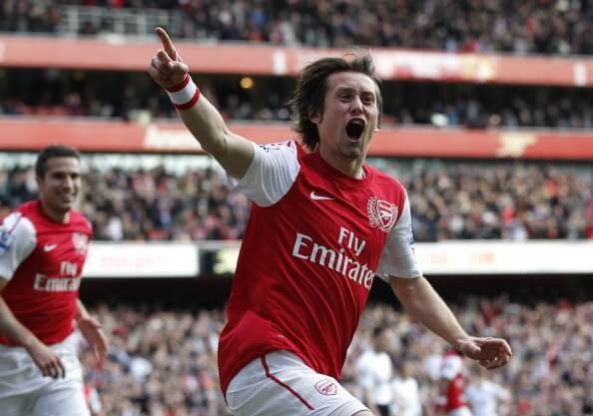
Another Arsenal fatality at the hands of lady luck is, believe it or not, another diminutive midfielder.
Lovingly known as ‘Little Mozart’, Tomas Rosicky spent a decade in North London tantalising and teasing fans with his vision, superb technique, driving runs and a predilection for shooting from distance.
Signed from Borussia Dortmund in 2006, Rosicky instantly became a fans’ favourite. His manner of playing, specifically his consistent use of the outside of his foot to pass or shoot, endeared him immediately to the Premier League.
Unfortunately, his body often struggled to keep up with the hardships of the English league.
There was no specific injury problem: he suffered from a severe knee injury on two occasions that required surgery; his Achilles tendon also required surgery; whilst there was also significant muscle fibre injuries.
Despite 10 years at Arsenal, Rosicky only played 200 games. ‘Little Mozart’ – fondly remembered but tragically encumbered by injury.
